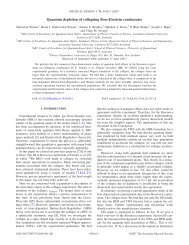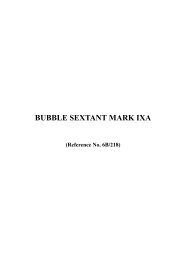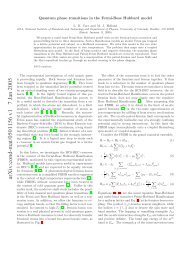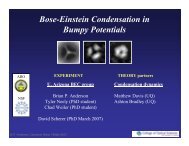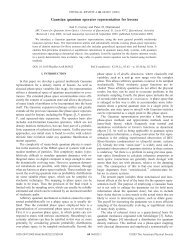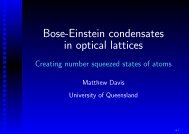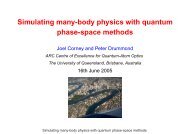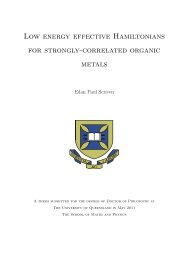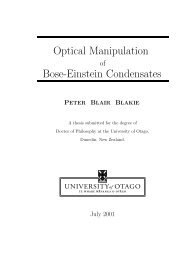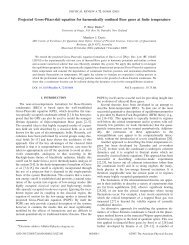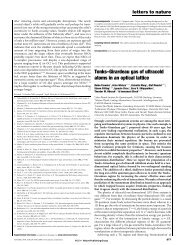Open Quantum Dynamics of Mesoscopic Bose-Einstein ... - Physics
Open Quantum Dynamics of Mesoscopic Bose-Einstein ... - Physics
Open Quantum Dynamics of Mesoscopic Bose-Einstein ... - Physics
Create successful ePaper yourself
Turn your PDF publications into a flip-book with our unique Google optimized e-Paper software.
2. Properties <strong>of</strong> an atomic <strong>Bose</strong> condensate in a double-well potentialFor the two-mode model, this becomesρ(x, t) = 〈 N2 − Ĵx(t) 〉 |u 1 (x)| 2 +〈 N2 + Ĵx(t)〉|u 2 (x)| 2 − 2 〈 Ĵ z (t) 〉 u 1 (x)u 2 (x), (2.71)where the u i are the local modes for each well, as defined in Eq. (2.7). Now ρ can becalculated analytically from the ground state in the two limiting cases <strong>of</strong> the collisionalstrength. To facilitate the discussion, we will use the single-particle normalised interactionstrength κ = κ/Ω, which differs by a factor <strong>of</strong> N from the multiparticle normalised interactionstrength Θ introduced in the Sec. 2.2.1. For the ∣ j, −j〉zfunction factorises intoground state, the densityρ a (x, t) =N|φ(x)| 2 ;φ(x) = (u 1(x) − u 2 (x))√2, (2.72)where φ(x) is the single-particle ground state <strong>of</strong> the global potential. Because this canbe factorised into the square <strong>of</strong> a single macroscopic wave-function, it possesses full firstordercoherence and can be characterised by a single long-range order parameter. For thestrongly interacting case, the ground state ∣ ∣ j, 0〉xleads toρ b (x, t) = N 2(u1 (x) 2 + u 2 (x) 2) , (2.73)which is just the sum <strong>of</strong> the density functions for each <strong>of</strong> the local modes. Both <strong>of</strong> thesecases are illustrated in Fig. 2.16, for a double-well potential in which the two minima areat q 0 ± 3x 0 . The feature that distinguishes the two extremes is the presence or absence<strong>of</strong> the interference fringe in the centre between the two wells, whose presence reduces thedensity function at this point. Its size is a maximum for the tunnelling dominated groundstate (when κ ≪ 1) and is zero when the κ ≫ 1. In general, its relative size is proportionalto the moment | 〈 ∣ ∣ 〉Ψ ∣Ĵz∣Ψ0 0 |/N 2 ,where ∣ 〉 Ψ0 is the ground state. Figure 2.17(a) showsthat 〈 ∣ ∣ 〉Ψ ∣Ĵz∣Ψ0 0 /N changes little as N varies, and therefore the size <strong>of</strong> the interferenceterm varies approximately inversely with the size <strong>of</strong> the condensate, becoming negligiblefor large N. Figure 2.17(b) reveals how the interference term varies with κ in between thetwo extremes. There appears to be a threshold value <strong>of</strong> κ, above which the interferenceterm is close to zero.Second-order coherence features are indicated by the normally-ordered second-ordercorrelation function:G 2 (x 1 ,x 2 ,t)= 〈 ˆψ† (x 1 ) ˆψ † (x 2 ) ˆψ(x 2 ) ˆψ(x 1 ) 〉 . (2.74)50



